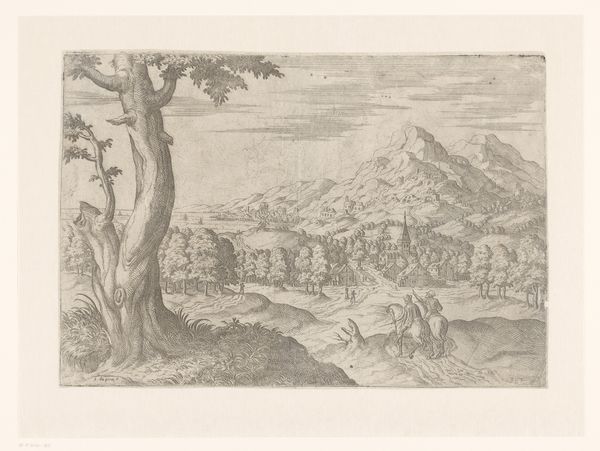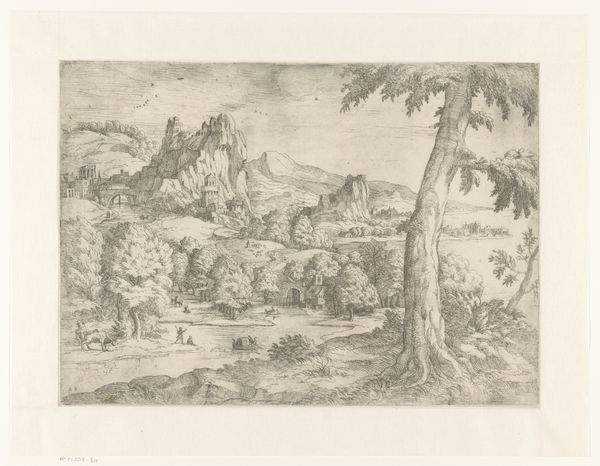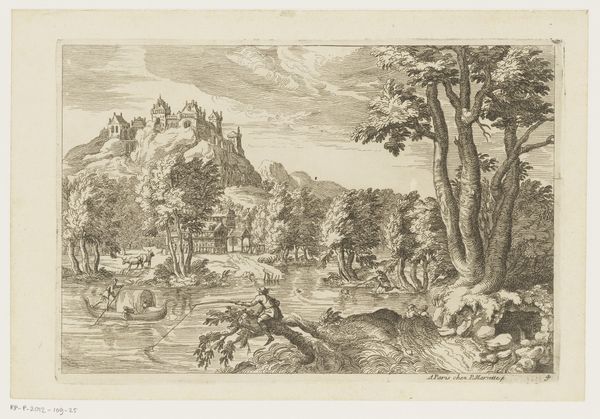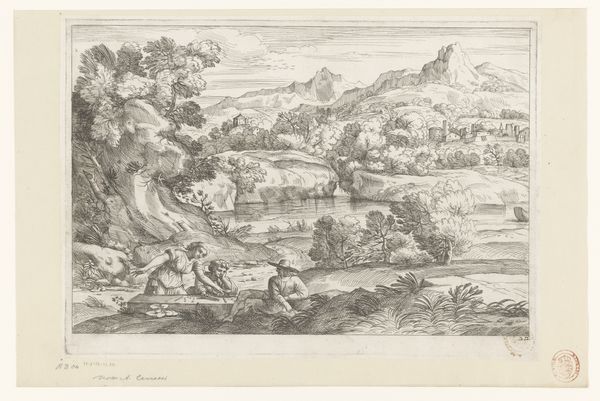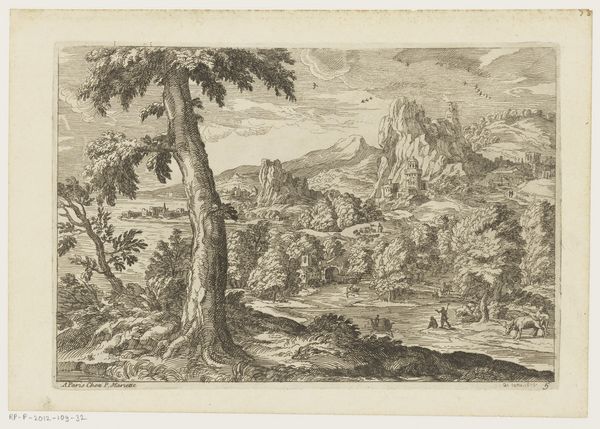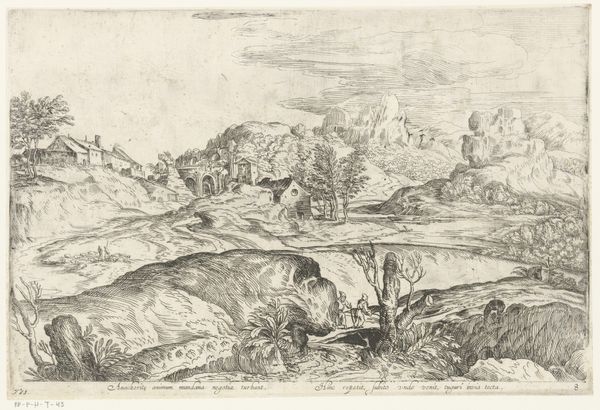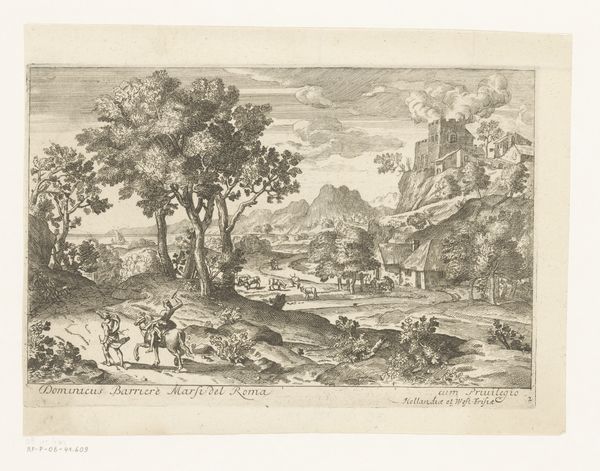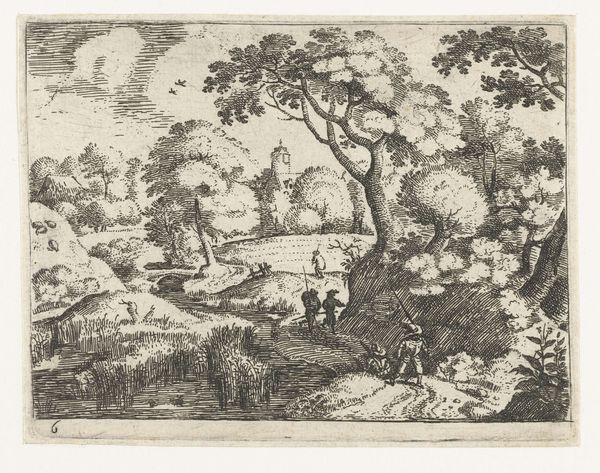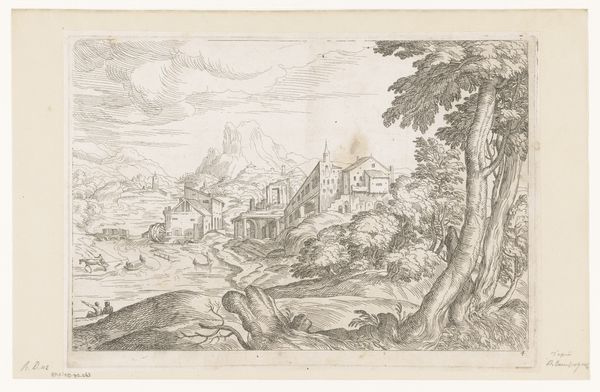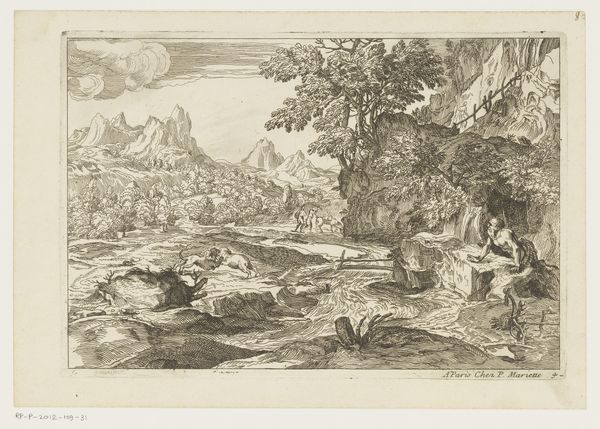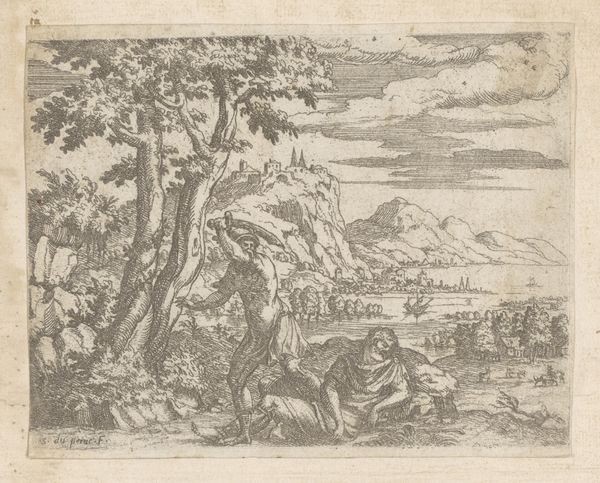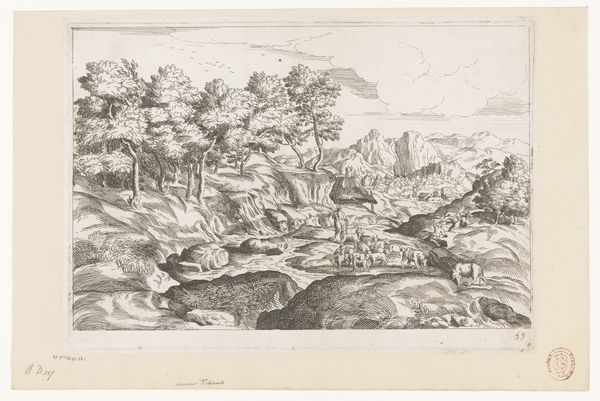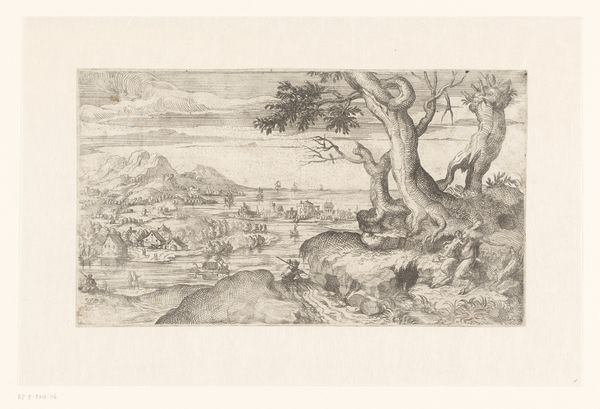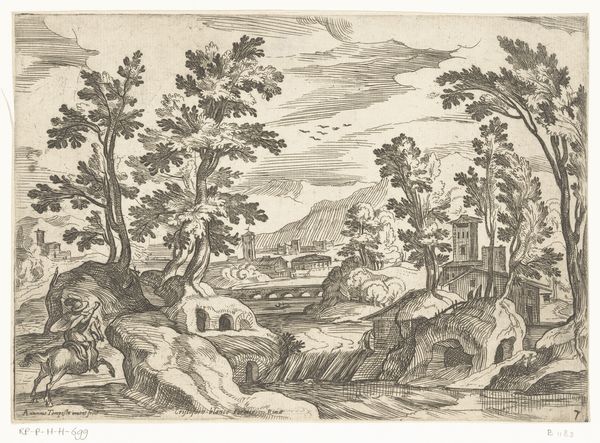
print, etching
# print
#
pen sketch
#
etching
#
landscape
#
mannerism
#
line
#
cityscape
#
history-painting
Dimensions: height 235 mm, width 370 mm
Copyright: Rijks Museum: Open Domain
Étienne Dupérac made this landscape with a fisherman and a castle on a hilltop as an engraving. We can use it to consider the visual codes and cultural references that shape meaning. Made in the 16th century, this image reflects a time when European society was deeply structured by class and hierarchy. The castle, perched high on the hill, immediately tells us about power, wealth, and social status. The fisherman, in contrast, is part of the natural world. These visual cues tell a story about the social order of the time. Institutions played a significant role in shaping the production and reception of art. Artists often relied on the patronage of wealthy individuals or institutions, such as the church or the court, for their livelihoods. This patronage system influenced the themes and styles of art, reflecting the tastes and values of the elite. To understand the context more fully, we might consult historical archives, social histories, and studies of patronage systems. These can help us understand the conditions that shape the meaning of this landscape.
Comments
No comments
Be the first to comment and join the conversation on the ultimate creative platform.
